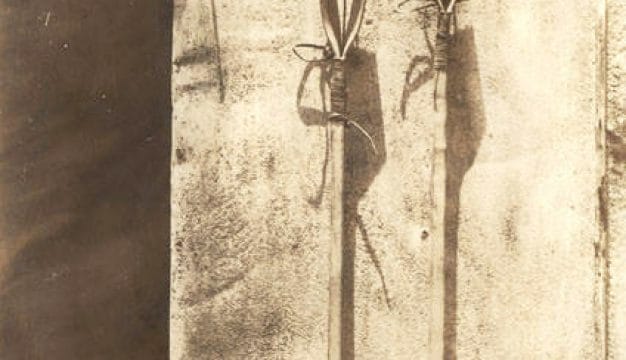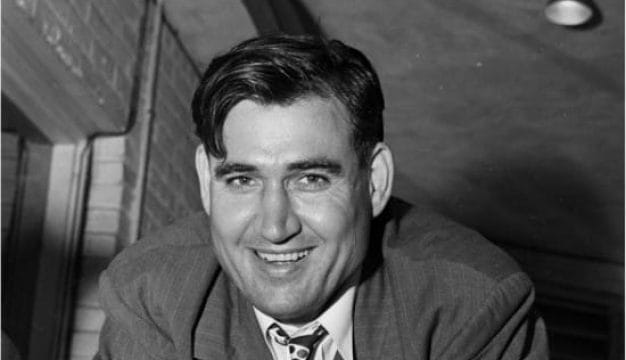Thomas M. Owen
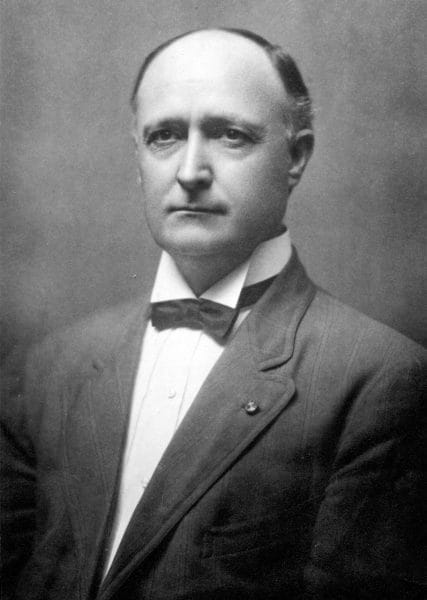 Thomas McAdory Owen
Thomas McAdory Owen (1866-1920) was the founder and first director of the Alabama Department of Archives and History (ADAH), the first publicly funded and independent state archives in the nation. Under his guidance, ADAH amassed an impressive array of papers, historical works, and artifacts relating to Alabama history. Owen was also responsible for the revival of the Alabama Historical Society and wrote the first comprehensive study of the state’s history and people, History of Alabama and Dictionary of Alabama Biography (1920).
Thomas McAdory Owen
Thomas McAdory Owen (1866-1920) was the founder and first director of the Alabama Department of Archives and History (ADAH), the first publicly funded and independent state archives in the nation. Under his guidance, ADAH amassed an impressive array of papers, historical works, and artifacts relating to Alabama history. Owen was also responsible for the revival of the Alabama Historical Society and wrote the first comprehensive study of the state’s history and people, History of Alabama and Dictionary of Alabama Biography (1920).
Born on December 15, 1866, Thomas McAdory Owen was raised in Jonesboro, Jefferson County, near what is now Bessemer. He was the son of physician William Owen and Nancy McAdory Owen. Owen attended the University of Alabama and in 1887 graduated with both a bachelor’s and a law degree. Two months later, he began practicing law in Bessemer and within a year had become heavily involved in the local political scene. In 1888, he was elected justice of the peace. By 1890, he was chairman of the Democratic executive committee in Jefferson County, and in 1892 he became assistant county solicitor of Jefferson County. During this period, he met Marie Bankhead, daughter of U.S. Congressman John Hollis Bankhead, and the couple was married on April 12, 1893. Owen and his wife had two children, Thomas McAdory Jr. (b. 1894) and John Hollis Bankhead (b. 1895), who died at the age of five.
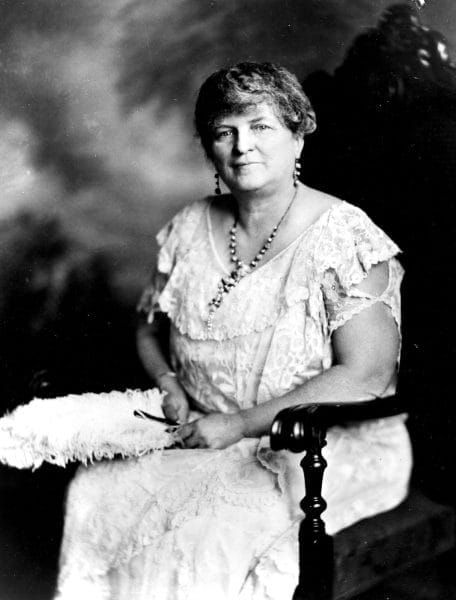 Marie Bankhead Owen
In 1889, Owen began collecting student publications from his alma mater. As time progressed, his interest broadened to include all of Alabama history. He resolved to write a history of the state, but soon learned that no single library contained the sources he needed. This prompted him to begin building his own personal archival collection of old newspapers, pamphlets, maps, private papers, scrapbooks, and local and county histories. Owen’s avocation took up an increasingly large amount of his time, and his legal practice suffered as a result, causing the family financial difficulties. Seeking to improve his family fortunes, Owen asked his father-in-law to help him obtain a government position in Washington, D.C. On September 1, 1894, Owen arrived in Washington and spent every spare moment of his free time conducting research in the historical and intellectual resources of Washington. In 1896, Owen and a number of other historians founded the Southern History Association. Owen continued to build his personal collection of historical materials and used the information to prepare bibliographies on Alabama and Mississippi. Both were published by the American Historical Association in 1897 and 1899, respectively, and garnered Owen a national reputation as a bibliographer. As Owen’s involvement with the professional history community grew, he became convinced that the most effective means of preserving the historical record of Alabama would be a publicly funded statewide archive program.
Marie Bankhead Owen
In 1889, Owen began collecting student publications from his alma mater. As time progressed, his interest broadened to include all of Alabama history. He resolved to write a history of the state, but soon learned that no single library contained the sources he needed. This prompted him to begin building his own personal archival collection of old newspapers, pamphlets, maps, private papers, scrapbooks, and local and county histories. Owen’s avocation took up an increasingly large amount of his time, and his legal practice suffered as a result, causing the family financial difficulties. Seeking to improve his family fortunes, Owen asked his father-in-law to help him obtain a government position in Washington, D.C. On September 1, 1894, Owen arrived in Washington and spent every spare moment of his free time conducting research in the historical and intellectual resources of Washington. In 1896, Owen and a number of other historians founded the Southern History Association. Owen continued to build his personal collection of historical materials and used the information to prepare bibliographies on Alabama and Mississippi. Both were published by the American Historical Association in 1897 and 1899, respectively, and garnered Owen a national reputation as a bibliographer. As Owen’s involvement with the professional history community grew, he became convinced that the most effective means of preserving the historical record of Alabama would be a publicly funded statewide archive program.
Owen returned to Alabama in 1897 and set up a law practice in the Black Belt town of Carrollton, Pickens County, but he remained preoccupied with history. He decided to focus his attention on the dormant Alabama Historical Society (AHS) and in 1898 convinced several like-minded people that the society should be revived. Owen was named secretary of the society and began a campaign to increase membership, counting state legislators among the new supporters. In addition to the membership drive, Owen launched a major publicity campaign and prepared two legislative bills for submission to the state government. The first requested $250 annually for two years to publish the AHS’s journal, Transactions. The second bill called for establishing an Alabama history commission. Owen submitted the bills at a fortuitous time. The day after the first bill passed the House of Representatives, the state government held a celebration for the unveiling of a Confederate monument on the north lawn of the capitol building. In a demonstration of southern patriotism and pride, the members of the House of Representatives quickly passed the second bill establishing the history commission, 49 to 1, and then proceeded immediately to the unveiling. The entire legislature heard former governor and AHS member Thomas Goode Jones make a speech at the ceremony in which he spelled out the state’s obligations to its past. The Senate passed both bills unanimously two days later.
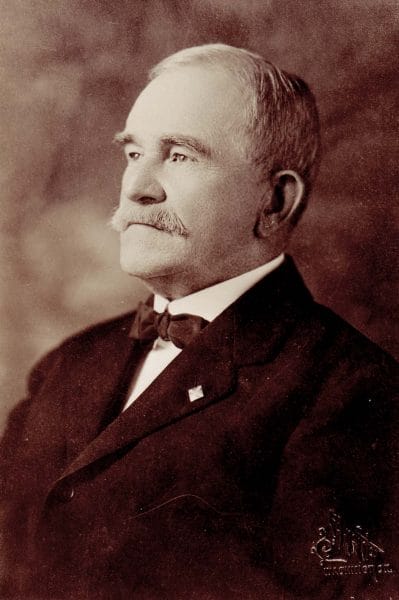 Joseph F. Johnston
Governor Joseph F. Johnston, acting as president of the historical society, appointed Owen and four other AHS members to the history commission on January 6, 1899. At the first meeting Owen was appointed chairman and was authorized to supervise the preparation of the commission’s report on the state of historical materials in Alabama. Owen contacted hundreds of individuals and organizations regarding information about Alabama historical records and corresponded with historical societies throughout the country to learn how similar commissions functioned and to gather ideas for Alabama’s institution. The result of his research was a 447-page volume submitted to Gov. William J. Samford in 1900. By far the most important part of the report was the recommendation for the creation of a state department of archives and history. This mandate was unique in two regards: the department would exist as an independent, state-supported agency, and it would be charged with direct responsibility for the official archives of state government.
Joseph F. Johnston
Governor Joseph F. Johnston, acting as president of the historical society, appointed Owen and four other AHS members to the history commission on January 6, 1899. At the first meeting Owen was appointed chairman and was authorized to supervise the preparation of the commission’s report on the state of historical materials in Alabama. Owen contacted hundreds of individuals and organizations regarding information about Alabama historical records and corresponded with historical societies throughout the country to learn how similar commissions functioned and to gather ideas for Alabama’s institution. The result of his research was a 447-page volume submitted to Gov. William J. Samford in 1900. By far the most important part of the report was the recommendation for the creation of a state department of archives and history. This mandate was unique in two regards: the department would exist as an independent, state-supported agency, and it would be charged with direct responsibility for the official archives of state government.
Owen then drafted a bill to create the Alabama Department of Archives and History (ADAH), which passed both houses nearly unanimously and was signed into law by Samford on February 27, 1901. The governor then appointed a board of trustees for ADAH, which held its first meeting just a few days after the bill was signed into law. The politically astute Owen had included language in the bill requiring that the board of trustees consist of one member from each of the state’s congressional districts, with the governor serving as an ex-officio member. By requiring geographical representation, Owen increased the chances of maintaining statewide support for the department. Owen had great expectations that ADAH would serve as the main cultural repository for the state and envisioned it as combining at the state level the present-day functions of the National Archives, the Library of Congress, the National Trust for Historic Preservation, and the Smithsonian Institution.
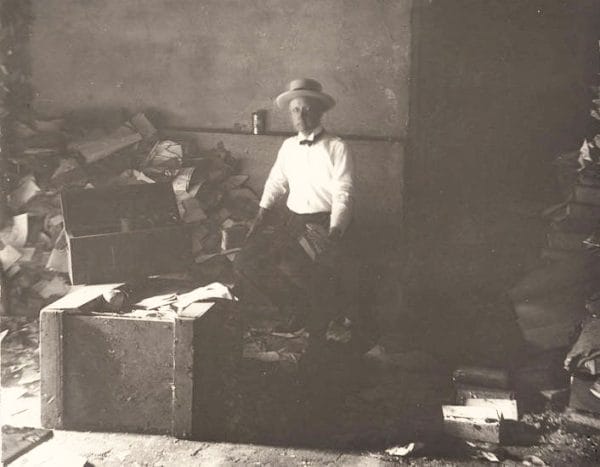 Owen Sorting Records
On March 2, 1901, the board of trustees unanimously elected Owen as the new director of ADAH. Initially, Owen and his small staff were given office space in the Senate cloak room, which proved a very advantageous location because it allowed Owen to lobby the Senate on an almost continuous basis. In addition to the cloak room, the governor let Owen use the Senate chamber as a gallery to display the various historical records and artifacts that he had collected. The collection increased dramatically under Owen’s guidance, and the department quickly ran out of space. In 1903, the legislature passed a bill appropriating funds to enlarge the capitol building, and Owen was made secretary of the commission that would oversee construction. His participation ensured that space was allocated for the department in the new south wing of the capitol. During Owen’s tenure, the department brought in some of its most significant holdings, including most of the state records of nineteenth-century Alabama, many of the collections of nineteenth- and early twentieth-century personal papers, a large portion of the Civil War flag collection, and the bulk of the nineteenth-century portrait collection. Owen was personally connected to the two ADAH directors that followed his death, his wife Marie Bankhead Owen and Peter Brannon, whom Owen hired on staff during his time as director. In 1904, Owen also was a charter member and first president of the Alabama Library Association.
Owen Sorting Records
On March 2, 1901, the board of trustees unanimously elected Owen as the new director of ADAH. Initially, Owen and his small staff were given office space in the Senate cloak room, which proved a very advantageous location because it allowed Owen to lobby the Senate on an almost continuous basis. In addition to the cloak room, the governor let Owen use the Senate chamber as a gallery to display the various historical records and artifacts that he had collected. The collection increased dramatically under Owen’s guidance, and the department quickly ran out of space. In 1903, the legislature passed a bill appropriating funds to enlarge the capitol building, and Owen was made secretary of the commission that would oversee construction. His participation ensured that space was allocated for the department in the new south wing of the capitol. During Owen’s tenure, the department brought in some of its most significant holdings, including most of the state records of nineteenth-century Alabama, many of the collections of nineteenth- and early twentieth-century personal papers, a large portion of the Civil War flag collection, and the bulk of the nineteenth-century portrait collection. Owen was personally connected to the two ADAH directors that followed his death, his wife Marie Bankhead Owen and Peter Brannon, whom Owen hired on staff during his time as director. In 1904, Owen also was a charter member and first president of the Alabama Library Association.
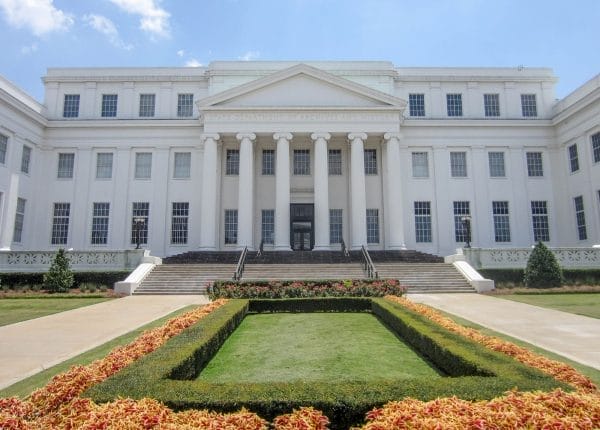 Alabama Department of Archives and History
In addition to the founding of ADAH, Owen is probably best known for his ground-breaking and monumental History of Alabama and Dictionary of Alabama Biography, published after his death in 1921. In it, Owen compiled massive amounts of information on places, institutions, and individuals related to Alabama, and the work remains an important resource. Owens’s successes brought ADAH national attention and spurred a historical preservation movement in much of the South. One year after the passage of the bill founding the Alabama agency, the Mississippi legislature approved an almost identical law establishing the Mississippi Department of Archives and History. In less than a decade, Arkansas, South Carolina, and North Carolina had also established state archives. Owen served as head of ADAH until his untimely death on March 25, 1920, at the age of 53, and Marie Bankhead Owen took the helm of the archives.
Alabama Department of Archives and History
In addition to the founding of ADAH, Owen is probably best known for his ground-breaking and monumental History of Alabama and Dictionary of Alabama Biography, published after his death in 1921. In it, Owen compiled massive amounts of information on places, institutions, and individuals related to Alabama, and the work remains an important resource. Owens’s successes brought ADAH national attention and spurred a historical preservation movement in much of the South. One year after the passage of the bill founding the Alabama agency, the Mississippi legislature approved an almost identical law establishing the Mississippi Department of Archives and History. In less than a decade, Arkansas, South Carolina, and North Carolina had also established state archives. Owen served as head of ADAH until his untimely death on March 25, 1920, at the age of 53, and Marie Bankhead Owen took the helm of the archives.
Further Reading
- Doster, James F. “Thomas McAdory Owen Sr.” In Keepers of the Past, Clifford L. Lord, ed. Chapel Hill: University of North Carolina Press, 1965.
- Howard, Milo B., Jr. “Thomas McAdory Owen: Alabama’s Greatest Bibliographer.” Alabama Review 28 (January 1975): 3-15.
- Monroe, Alden N. “Thomas Owen and the Founding of the Alabama Department of Archives and History.” Provenance 21 (2003): 22-35.
- Owen, Thomas M. History of Alabama and Dictionary of Alabama Biography. Spartanburg, S.C.: Reprint Co., 1978.
- Simpson, Robert R. “The Origins of the Alabama Department of Archives and History.” Alabama Historical Quarterly 34 (Summer 1972): 155-170.
- Stephenson, Wendell H. “Some Pioneer Alabama Historians: III. Thomas M. Owen.” Alabama Review 2 (January 1949): pp. 45-62.

